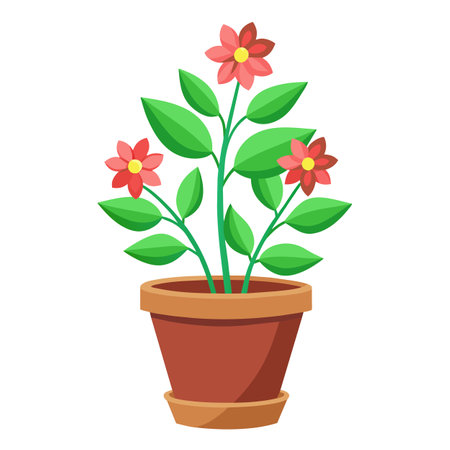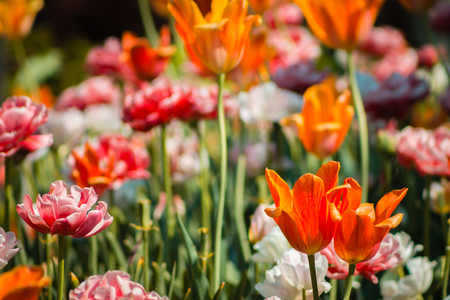Introduction to Flower Bulbs in America
Flower bulbs have long held a cherished place in American gardens, celebrated for their vibrant blooms and the promise of seasonal color. These underground storage organs—such as tulips, daffodils, lilies, and hyacinths—are renowned for their ability to thrive in a variety of climates and soil types across the United States. Their unique structure allows them to store nutrients during dormant periods, ensuring that they return year after year with minimal care. The journey of flower bulbs into American landscapes began centuries ago, influenced by both European settlers and global horticultural trends. Today, these resilient plants are woven into the fabric of American gardening culture, symbolizing renewal each spring and gracing neighborhoods from suburban yards to public parks with bursts of color and fragrance.
2. The Arrival and Spread of Flower Bulbs
The story of flower bulbs in the United States begins with the arrival of European settlers in the 17th century. Early colonists brought familiar plants from their homelands, including tulips, daffodils, and hyacinths, not only for their beauty but also as a way to maintain a connection to their cultural roots. As waves of immigrants from countries such as the Netherlands, England, and Germany settled across America, they continued this tradition, bringing with them prized bulbs and horticultural knowledge.
The introduction and distribution of flower bulbs followed patterns of migration and settlement across different regions of the United States. In New England, Dutch and English settlers planted bulbs in cottage gardens, while in the South, bulbs like jonquils thrived in warmer climates. The expansion westward saw bulbs spreading along with pioneers, adapting to new environments and integrating into local gardening traditions.
| Region | Popular Bulb Types | Key Immigrant Groups |
|---|---|---|
| New England | Tulips, Daffodils | Dutch, English |
| Southeast | Jonquils, Narcissus | English, French |
| Midwest & Great Plains | Iris, Alliums | German, Scandinavian |
| West Coast | Lilies, Gladiolus | Dutch, Asian Immigrants |
This movement was not just about beautifying homesteads; it reflected the diverse identities and aspirations of settlers forging new lives in America. Over time, public parks and estates began featuring bulb displays that echoed European landscapes while evolving into distinctly American expressions. By the late 19th century, mail-order catalogs helped flower bulbs reach even remote communities, making them an enduring symbol of hope and renewal throughout the nation’s history.

3. Economic and Agricultural Impact
The development of the flower bulb industry in the United States has played a significant role in shaping both local economies and the broader agricultural landscape. While the tradition of cultivating flower bulbs originally came from Europe, American farmers quickly recognized their potential as a high-value crop. Key states such as Michigan and Oregon have become powerhouses in bulb production thanks to their favorable climates, rich soils, and established farming infrastructure.
In Michigan, the sandy soils around the Great Lakes provide ideal conditions for tulips, daffodils, and other popular bulb flowers. The annual Tulip Time Festival in Holland, Michigan, not only celebrates Dutch heritage but also draws thousands of tourists every spring, providing a major economic boost to local businesses. Similarly, Oregon’s Willamette Valley is renowned for its wide variety of bulbs and has become a hub for both commercial growers and horticultural research. These regions supply bulbs nationwide, supporting garden centers, landscapers, and home gardeners across the country.
The impact of flower bulb cultivation extends beyond direct sales. Bulb-related tourism, seasonal festivals, and farm tours have become important sources of revenue for rural communities. Additionally, the industry supports jobs in agriculture, transportation, marketing, and retail. As Americans continue to embrace gardening and landscaping with flowering bulbs, this sector remains a vibrant contributor to the U.S. economy and a symbol of regional pride.
4. Cultural Symbolism and Traditions
Flower bulbs have played a significant role in shaping American cultural traditions and symbolism, particularly through popular varieties like tulips and daffodils. These flowers are not only admired for their beauty but also hold deep meanings that resonate during holidays, festivals, and in everyday life. Tulips, for example, are often associated with spring renewal, love, and charity. Their vibrant colors signal the end of winter and the beginning of new possibilities. Daffodils, on the other hand, symbolize hope and resilience; they are among the first flowers to bloom after winter, making them a powerful emblem for new beginnings. In the United States, these symbolic meanings have woven themselves into the fabric of national traditions.
Flower Bulbs in American Holidays
Many American celebrations highlight the use of flower bulbs as part of their festivities. During Easter, daffodils are widely used in decorations and religious ceremonies to represent resurrection and hope. Tulip festivals, most notably in states like Michigan and Washington, bring communities together each spring to celebrate heritage and the arrival of warmer days. Flower bulb displays are also common during Thanksgiving as symbols of gratitude for nature’s bounty.
Symbolic Meanings of Popular Flower Bulbs
| Flower Bulb | Symbolic Meaning | Associated Tradition/Festival |
|---|---|---|
| Tulip | Love, Renewal, Charity | Tulip Festivals, Mother’s Day |
| Daffodil | Hope, New Beginnings | Easter Celebrations, Daffodil Days (Cancer Awareness) |
Modern Interpretations and Community Impact
Today, planting flower bulbs has become a community activity that fosters unity and pride. Local gardening clubs host “bulb planting days” where neighbors collaborate to beautify public spaces. Schools use tulips and daffodils in educational programs about growth cycles and environmental stewardship. Moreover, organizations such as the American Cancer Society leverage daffodils in fundraising campaigns—“Daffodil Days”—where gifting these flowers symbolizes support for those battling cancer. Through these evolving traditions, flower bulbs continue to be more than just garden staples; they serve as enduring symbols of hope, love, and communal spirit across the United States.
5. Flower Bulbs in Modern American Landscaping
In contemporary America, flower bulbs have become a staple in landscape design, both at home and in public spaces. Their unique ability to provide vibrant color and texture early in the growing season makes them a favorite among landscape architects and home gardeners alike. Bulbs such as tulips, daffodils, and alliums are often used to create stunning curb appeal, forming colorful borders, mass plantings, or focal points in residential yards. Many homeowners appreciate the low-maintenance nature of bulbs, as well as their perennial return, which fits well with the American preference for sustainable and cost-effective gardening.
Public parks and city gardens across the United States also make extensive use of bulb plantings. Large-scale displays, like those seen during spring festivals in cities such as Holland, Michigan or Skagit Valley, Washington, attract thousands of visitors each year. These public installations not only beautify urban environments but also foster community pride and tourism. Municipalities often choose bulbs for their adaptability and resilience, ensuring reliable blooms even after harsh winters.
Beyond aesthetics, flower bulbs are increasingly recognized for their role in environmental conservation initiatives. Native bulb species are being reintroduced into prairie restorations and pollinator gardens to support local ecosystems. Bulbs provide early nectar sources for bees and other pollinators emerging from winter dormancy. As Americans become more environmentally conscious, there is growing interest in planting native and naturalized bulbs that require fewer resources while supporting biodiversity. In this way, flower bulbs bridge traditional beauty with modern values of sustainability and ecological stewardship.
6. Conclusion: Enduring Legacy and Future Trends
Throughout American history, flower bulbs have played a pivotal role in shaping both the landscape and cultural identity of communities across the nation. From their colonial introduction to their widespread adoption in home gardens, public parks, and major events like the annual tulip festivals, bulbs such as tulips, daffodils, and lilies have become deeply woven into the fabric of American life. Their vibrant blooms symbolize renewal and hope, often marking seasonal changes and community celebrations.
Today, the cultural significance of flower bulbs remains strong, but new trends are also emerging. The growing popularity of native bulb species reflects a broader movement toward sustainable gardening practices and biodiversity. Gardeners are increasingly interested in drought-tolerant varieties and those that support local pollinators. At the same time, online resources and social media are making it easier than ever for Americans to share tips, source unique bulbs, and participate in virtual gardening communities.
The enduring appeal of flower bulbs lies in their ability to bridge tradition and innovation. As Americans continue to honor classic garden styles while embracing new ecological priorities, bulbs are poised to remain a vibrant part of the nation’s horticultural heritage. Whether planted along suburban streets or featured in urban rooftop gardens, flower bulbs will continue to inspire generations with their beauty, resilience, and cultural meaning.


